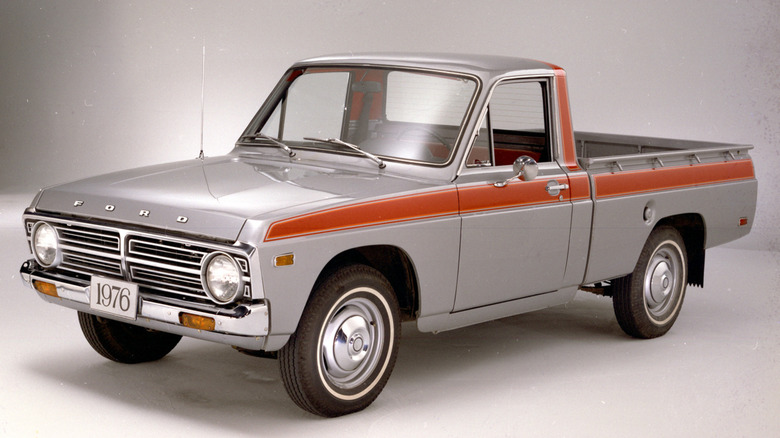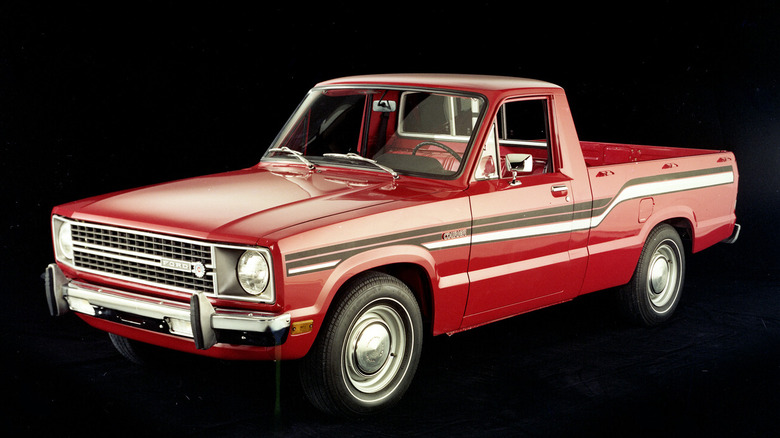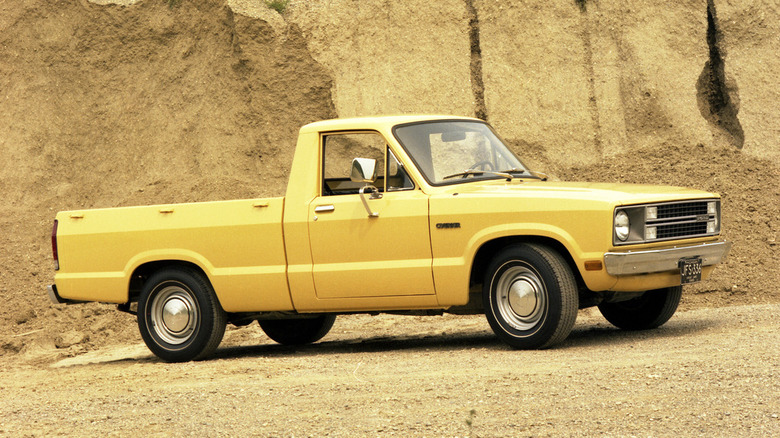The Classic Mini-Truck We Wish Ford Would Bring Back
If you've ever had a feeling that the current crop of small trucks just aren't that small anymore, you're certainly not wrong. Take the perennial favorite Toyota Tacoma, for example. The smallest version you can buy in 2023 is more than 36 inches longer than its 1990s counterpart.
Ford recently proved that a market for smaller trucks exists with its wildly successful Maverick, which sold so briskly that Ford prematurely stopped taking orders due to excess demand. However, one could nitpick that the Maverick is still on the fussy side for fulfilling basic truck needs. Plus, it's only available as a four-door crew cab with a cargo bed that's a mere 54 inches long.
Back in the early 1970s, Ford had a truly utilitarian compact pickup on its hands with the Courier, which was little more than a Mazda B-series truck with a different grill and headlights. This relationship gave Ford a 7% ownership stake in the Japanese automaker, which would grow to a controlling interest of 33.4% during the 1990s.
The cargo beds were added later
When the Couriers arrived on U.S. shores in 1972, they did so minus their cargo beds. This was to circumvent the "Chicken Tax," a 25% tariff on imported light trucks in retaliation for European tariffs levied on chicken from the United States. By importing the Couriers as chassis cabs and mounting the cargo beds stateside, the import tax rate was a much more manageable 4%.
For its inaugural year, the Courier boasted a 1.8-liter four-cylinder that lazed its way to 74 horsepower and 92 ft-lbs of torque. A four-speed manual transmission was standard, with an optional 3-speed automatic. Throughout its lifespan, the Courier was only ever available from the factory as a two-wheel (rear) drive, however, several companies offered four-wheel drive conversions in the aftermarket, one of which was called the "Sasquatch," a name which seems more than a little inappropriate for the tiny truck.
Still, the Courier was all business with its 6-foot bed — longer than many modern full-size trucks — and if that wasn't enough for your hauling needs, a 7-foot long bed was optional. The payload capacity was impressive for its size at 1,400 pounds.
The Courier's success inspired the Ranger
In 1976, the truck's cabin gained a little extra room for its occupants with a 3-inch stretch, followed by a significant redesign in 1977 with blockier, more contemporary styling. Retained throughout the model run was a front fascia with one headlight per side to differentiate the Courier from its Mazda sibling which featured quad headlights — two per side.
Besides refreshed styling, the late 1970s also brought some new, larger powerplants to the Courier including a standard 2.0 liter and optional 2.3 liter four-cylinder shared with the Pinto, Mustang, and just about every smallish Ford of the era. By the end of 1982, Ford was ready to launch its own compact pickup called the Ranger, so there was no longer a need to continue selling the rebadged Mazda as the Courier.
In the Courier's final year, the base price was $6,954 which is equal to about $22,000 in today's dollars. Coincidentally, that's about the same starting price as a new 2023 Maverick. So maybe history does repeat itself after all?


